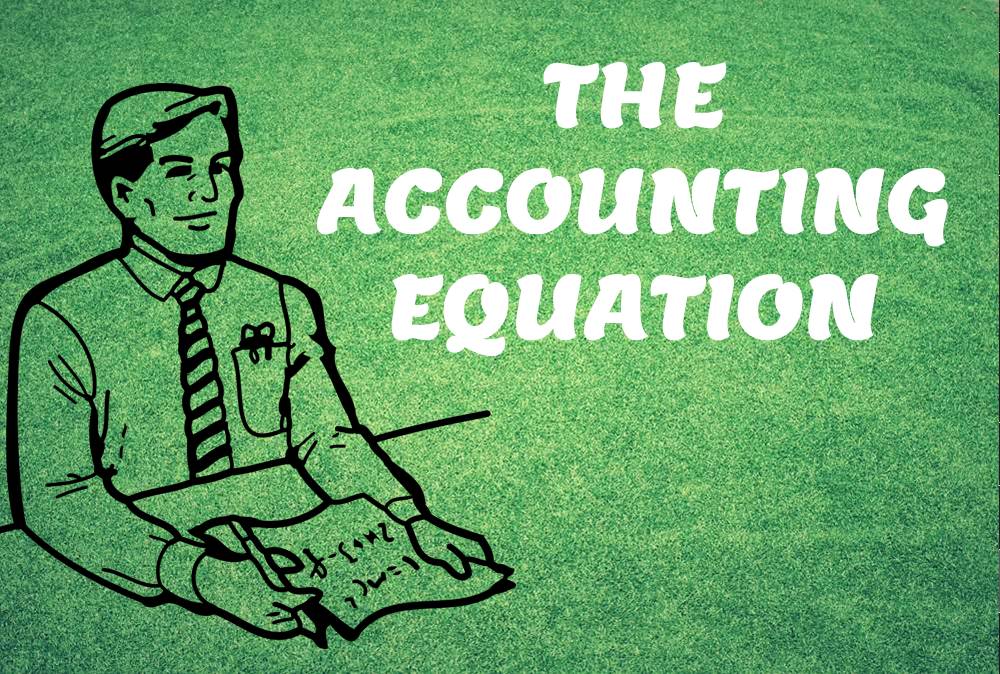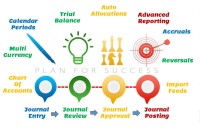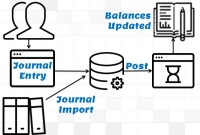- Home
- Business Processes
- Industry Knowledge
- Aerospace Industry
- Automotive Industry
- Banking Domain
- BFSI Industry
- Consumer/ FMCG Industry
- Chemicals Industry
- Engineering & Construction
- Energy Industry
- Education Domain
- Finance Domain
- Hospitality Domain
- Healthcare Industry
- Insurance Domain
- Retail Industry
- Travel and Tourism Domain
- Telecom Industry
- Leadership Skills
- eLearning
- Home
- Functional
- General Ledger (Record to Report)
- The Accounting Equation
The Accounting Equation
In this article we will help you understand the double-entry accounting system and state the accounting equation and define each element of the equation. Then we will describe and illustrate how business transactions can be recorded in terms of the resulting change in the elements of the accounting equation.
The Five Account Types:
Double-entry accounting uses five and only five account types to record all the transactions that can possibly be recorded in any accounting system. These five accounts are the basis for any accounting system, whether it is a manual or an automated accounting system. The five account types are the following:
Balance Sheet Accounts:
In accounting, the economic resources of a business are categorized under the terms of assets, liabilities, and owner's equity. These terms also refer to the three types of accounts in which a business records its transactions.
1. Assets:
Things of value that is owned and used by the business. Examples of assets include cash, land, buildings, and equipment.
2. Liabilities:
Debts that are owed by the business. These are the rights of the creditors or third parties over the assets of the business. Examples of liabilities include amounts due to suppliers, loans payable back to banks.
3. Equity:
The owner's claim to business assets. These are the rights of the owners over the assets of the business. Examples include capital invested by the owners, the shares subscribed by the public or the residual profit made by the business last year.
Profit and Loss Accounts:
The operations of the business can either result in profit or loss. It may increase the economic value over a period of time in case of profit or might decrease the economic worth in case of loss. All such activities can be recorded using two types of profit and loss accounts:
4. Revenue:
The amounts earned from the sale of goods and services. Examples include sales, interest received on bank deposits, a commission earned by the business.
5. Expenses:
Costs incurred in the course of business. Examples include purchases made for material, payment of rent, expenses for employee costs.
The balance sheet accounts are permanent accounts that carry a balance from year to year, like checking accounts, accounts receivable, and inventory accounts. The profit and loss accounts are temporary accounts that track revenues and expenses for a yearlong fiscal period and are then closed, with balances transferred to an equity account.
There can be thousands of sub-types; known as natural accounts which help in further classifying the nature of the transaction, but they all belong to one of the above lists, as practically all financial transactions can be recorded using these five types of accounts.
The Economic Impact of Transactions:
Businesses conduct transactions by exchanging goods or services for money. Transactions can take various forms, depending on the company, but whatever kind of transaction has occurred; it impacts the business's resources. The resources of a business refer to its supply of goods, services, information, or expertise that allows the business to operate and grow.
Businesses exchange items of equal value, real or perceived. Imagine that an exchange is like balancing a scale—the left side goes down (a service is given) and the right side reacts (cash is received) to maintain the balance of the scale. The exchange of goods or services, information, or expertise has an impact on the one side of the scale which is compensated by the value that the business gets in exchange that has an impact on the other side of the scale. The perceived value of both these impacts should be equal on the scale.
Accounting uses a technique to show how a transaction changes the business's resources while maintaining a balance, or showing the equal value of the exchange. The accounting equation is a tool that is applied throughout accounting activities to show how transactions affect the asset, liability, and owner's equity accounts.
The Accounting Equation:
The resources owned by a business are its assets. Examples of assets include cash, land, buildings, and equipment. The rights or claims to the assets are divided into two types:
- The Rights of the Creditors
- The Rights of the Owners
The rights of creditors are the debts of the business and are called liabilities. The rights of the owners are called owner’s equity. The following equation shows the relationship among assets, liabilities, and owner’s equity:
- Assets = Liabilities + Owner’s Equity
- This equation is called the accounting equation. Liabilities usually are shown before the owner’s equity in the accounting equation because creditors have first rights to the assets. Given any two amounts, the accounting equation may be solved for the third unknown amount. The equation shown above represents the format seen on a balance sheet.
The profit and loss accounts (representing revenues and expenses account types) also affect equity. Revenues from the sale of goods and services increase equity, while expenses incurred in the course of business decrease equity. Therefore, the accounting equation can be expanded to assets equal liabilities plus equity plus revenues minus expenses.
- Assets = Liabilities + Owner’s Equity + Revenues - Expenses
- Every transaction that has an accounting impact, will affect at least two accounts out of the five accounts explained above. If a transaction causes one side of the equation (assets) to increase, then the other side of the equation (liabilities or owner's equity) must also increase to keep the equation in balance.
You can apply the accounting equation by determining that the total of the asset accounts equals the total of the liability accounts plus the total of the owner's equity accounts. A double-entry accounting system will record the appropriate debits and credits, and track the changes to assets, liabilities, equity, revenue, and expense accounts. Keep this fundamental rule of accounting in mind when you need to determine how a transaction affects your business's resources.
Related Links
You May Also Like
-
When the quantum of business is expected to be moderate and the entrepreneur desires that the risk involved in the operation be shared, he or she may prefer a partnership. A partnership comes into existence when two or more persons agree to share the profits of a business, which they run together.
-
General Ledger - Advanced Features
Modern automated general ledger systems provide detailed and powerful support for financial reporting and budgeting and can report against multiple legal entities from the single system. These systems offer many advanced functionalities right from journal capture to advanced reporting. This article will provide an overview of some advanced features available in today's General Ledgers.
-
Multitude of these legal and operational structures clubbed with accounting and reporting needs give rise to many reporting dimensions at which the organization may want to track or report its operational metrics and financial results. This is where business dimensions play a vital role.
-
Period End Accruals, Receipt Accruals, Paid Time-Off Accruals, AP Accruals, Revenue Based Cost Accruals, Perpetual Accruals, Inventory Accruals, Accruals Write Off, PO Receipt Accrual, Cost Accrual, etc. are some of the most complex and generally misconstrued terms in the context of general ledger accounting. In this article, we will explore what is the concept of accrual and how it impacts general ledger accounting.
-
Introduction to Legal Entities Concept
Modern business organizations operate globally and leverage a large number of registered legal entities, and operate through complex matrix relationships. To stay competitive in the current global business environment, they must often develop highly diverse and complex organizational structures that cross international borders. Learn more about Legal Entities and their importance for businesses.
-
A Company (also called corporation) may be understood as an association of persons in which money is contributed by them, to carry on some business or undertaking. Persons who contribute the money are called the shareholders or the members of the company. A corporation is an artificial being, invisible, intangible and existing only in contemplation of law. Being the mere creature of law, it possesses only those properties which the charter of its creation confers upon it.
-
Concept of Representative Office
A representative office is the easiest option for a company planning to start its operations in a foreign country. The company need not incorporate a separate legal entity nor trigger corporate income tax, as long as the activities are limited in nature.
-
Prepayments and Prepaid Expenses
Prepayments are the payment of a bill, operating expense, or non-operating expense that settle an account before it becomes due. Learn the concept of prepaid expenses. Understand the accounting treatment for prepaid expenses. Understand the concept by looking at some practical examples and finally learn the adjusting entry for these expenses.
-
Global Business Services (GBS) Model
Global business services (GBS) is an integrated, scalable, and mature version of the shared services model. Global Business Services Model is a result of shared services maturing and evolving on a global scale. It is represented by the growth and maturity of the Shared services to better service the global corporations they support.
-
GL - Journal Posting and Balances
In this tutorial, we will explain what we mean by the posting process and what are the major differences between the posting process in the manual accounting system compared to the automated accounting systems and ERPs. This article also explains how posting also happens in subsidiary ledgers and subsequently that information is again posted to the general ledger.
Explore Our Free Training Articles or
Sign Up to Start With Our eLearning Courses

About Us
Learning
© 2023 TechnoFunc, All Rights Reserved









